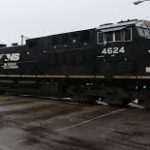
In a landmark action for the U.S. railroad sector, Union Pacific and Norfolk Southern said in July 2025 they are proposing a stock-and-cash merger worth about $85 billion. If approved, the transaction would form the largest freight railroad company in the United States, which has over 50,000 miles of track in 43 states. This merger could redefine the competitive landscape of the North American transportation and logistics sector.
Why the Union Pacific–Norfolk Southern Merger is Important
The U.S. economy is dependent on freight railroads for the transportation of products like energy, chemicals, autos, agricultural products, and consumer commodities. Through the merger of forces, Union Pacific and Norfolk Southern seek to enhance efficiency, grow their network, and provide more reliable service to shippers across the country.
The merged business would be in a strong position to compete with other competitor rail giants like BNSF Railway and CSX Corporation. Furthermore, the deal could assist the railroads in gaining more market share from the trucking industry, which is facing issues such as labour shortages, increased fuel prices, and tighter environmental regulations.
Financial Scale of the $85 Billion Deal
Worth $85 billion, the planned merger is one of the largest U.S. transportation deals on record. Norfolk Southern investors will receive a mix of cash and Union Pacific shares, providing a combined form of ownership for the combined company.
The magnitude of the transaction reflects the significance of rail transport in the American economy. Both companies together would have revenues of more than \$65 billion annually, making the combined entity a logistics industry behemoth.
A Nationwide Rail Network
The merger would form an unprecedented coast-to-coast rail network covering 50,000 miles in 43 states. Union Pacific’s dominance of the western United States is supplemented by Norfolk Southern’s comprehensive coverage in the eastern U.S. The integration would provide smooth freight connections nationwide, saving time in transit and enhancing supply chain dependability for heavy industries.
Shippers transporting cargo from the Midwest to the East Coast or from the Pacific Northwest to the Southeast would enjoy shorter, more efficient routes. The combination also guarantees to alleviate congestion at strategic hubs, simplify scheduling, and promote infrastructure investment.
Pros for Customers and the Economy
Greater service reliability: A single rail system might eliminate inefficiencies that result from handoffs between various carriers.
Reduced shipping costs: Economies of scale could result in more competitive prices for rail-dependent companies.
Environmental benefits: Railroads already have a lower carbon footprint per tonne-mile than trucks. An expanded, more efficient rail system might decrease greenhouse gas emissions even further.
Increased employment and investment: The merger could result in increased infrastructure investment in rail yards, bridges, and data technology.
Regulatory Obstacles and Antitrust Issues
Though there is likely benefit, the combination is under intense regulatory scrutiny. The Surface Transportation Board, which regulates railroad mergers, will scrutinise the effect of the transaction on competition, shippers, and communities closely.
Opponents claim that so massive a consolidation would lower competition, increase shipping costs, and restrict service choices for small customers. Labour unions would likely object as well to the loss of jobs resulting from network rationalisation and operational efficiencies.
Considering the Biden administration’s increased priority on antitrust enforcement in the past few years, the approval process would be long and arduous. The firms have underscored that their networks complement each other and the merger would enhance, not diminish, competition with other significant railroads and trucking firms.
A Historic Turning Point for U.S. Railroads
If it is approved, the Union Pacific-Norfolk Southern merger would be a historic milestone in the 150-year history of American railroads. The combined entity would have unprecedented access, linking ports, industrial centres, farm areas, and energy hubs in virtually every significant U.S. market.
Industry analysts think the transaction may bring in an era of upgraded freight rail, backed by digital technologies, automation, and green practices. Meanwhile, regulatory support will decide if the merger fulfils its vow of efficiency without harming competition.
Conclusion
The planned $85 billion Union Pacific-Norfolk Southern merger is poised to reshape the U.S. freight railroad business. Spanning a 50,000-mile network through 43 states across the country, the merged firm would offer customers increased dependability, greater efficiency, and more sustainability for America’s supply chains.
Though regulatory challenges persist, the magnitude of the deal highlights the pivotal position of railroads in the economic future of America. If successful, this combination might form a transport powerhouse—one strong enough to compete both with rival railroads and trucking companies—while delivering lasting value to shareholders, customers, and the wider economy.
Follow for more: https://theworldfinancialforum.com/wp-admin/post.php?post=2810&action=edit